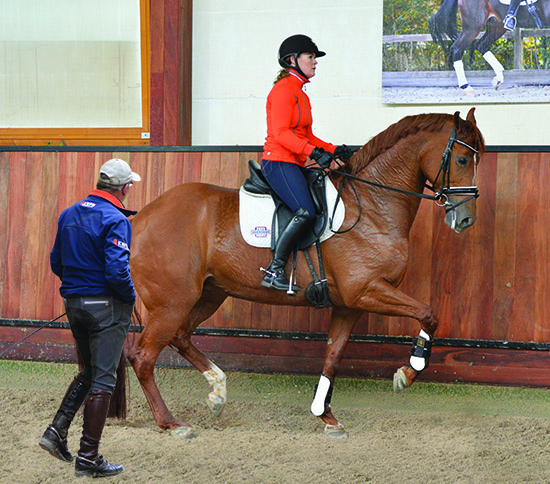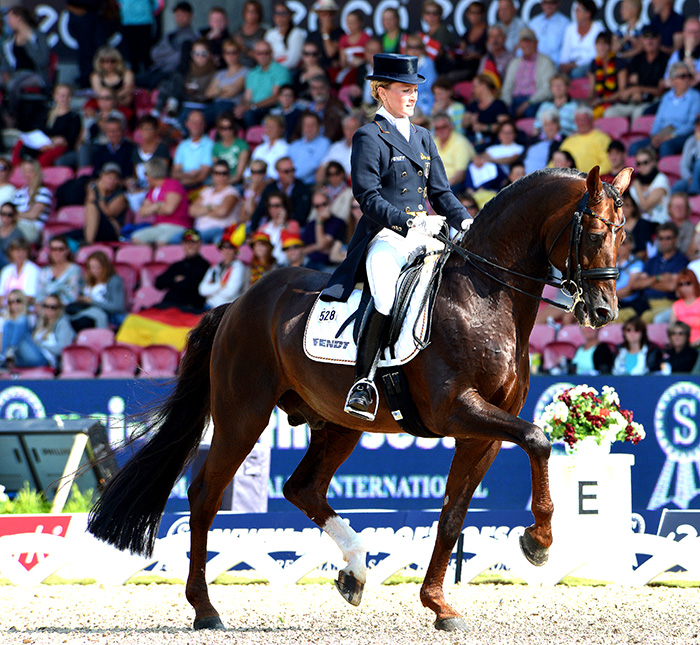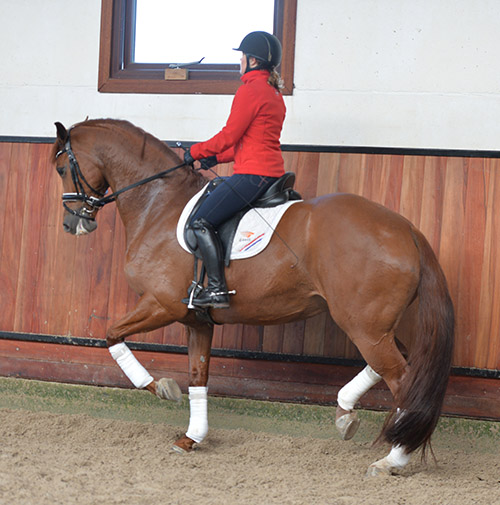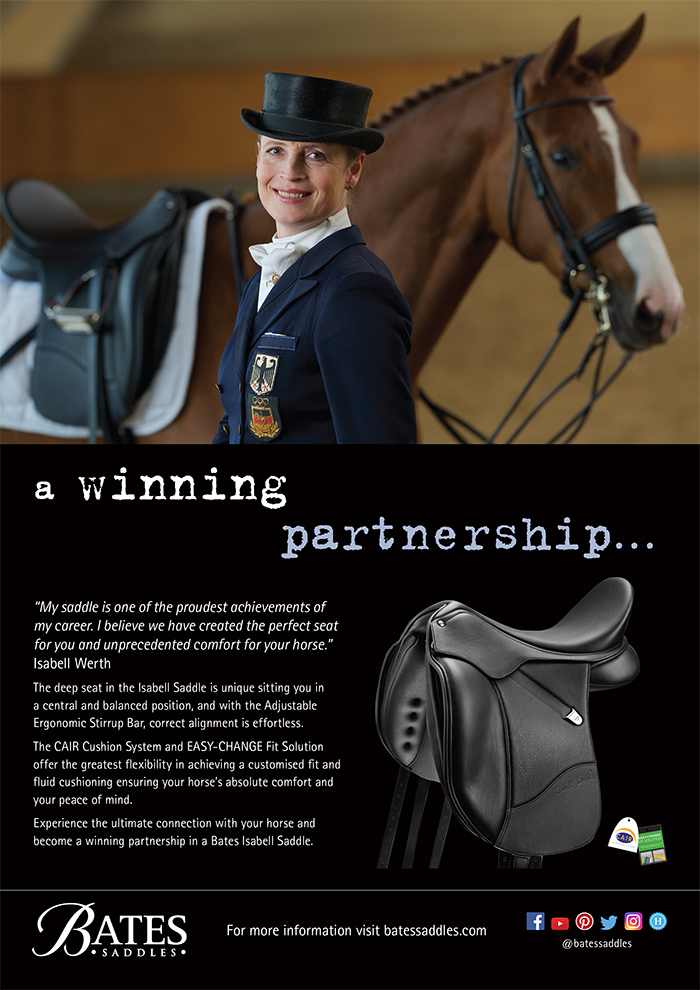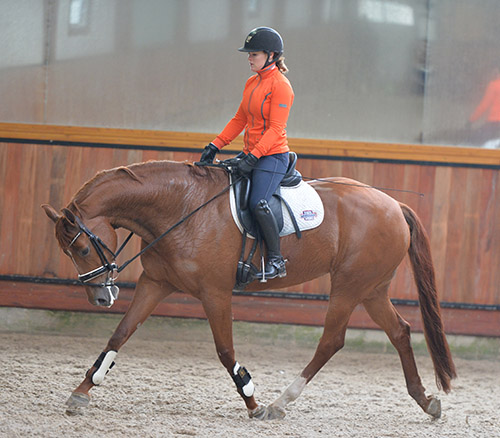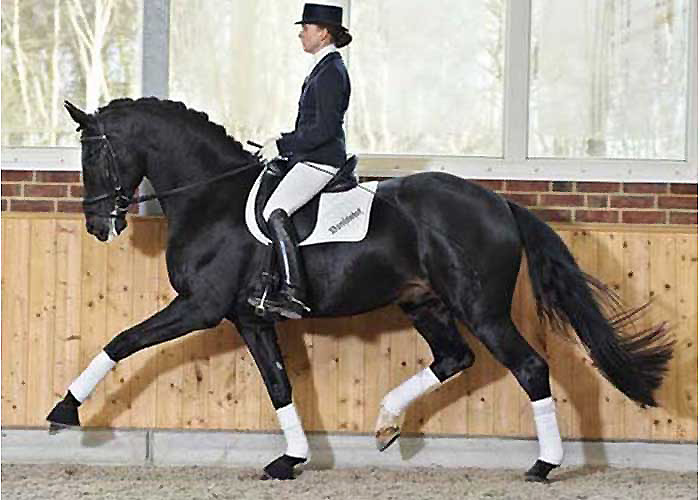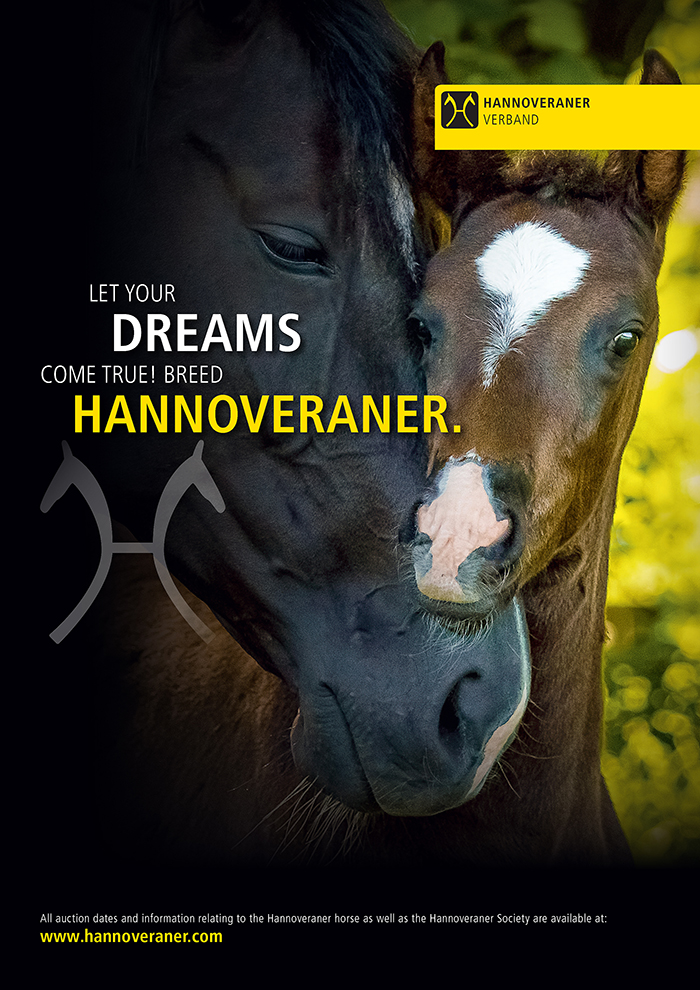Great riding tells its own story
Story Christopher Hector & Photos Roz Neave
There is a special feeling in the school at Elspeet, Holland. The air is infused with horsemanship, it’s not one of those super flash rich men’s follies, it’s a working space, a space where the partnership between horse and rider can mature and flourish.
Jennifer Sekreve is a special sort of talent, and her work with Amstellands Before Sunrise, a mare by Damon Hill out of a Flemmingh / Amulet mare is an outstanding example of tactful riding and progressive training. We saw Jen ride Sunrise two years ago, when we first visited Johan, she was six then, two years later she hovers on the edge of Prix St Georges.
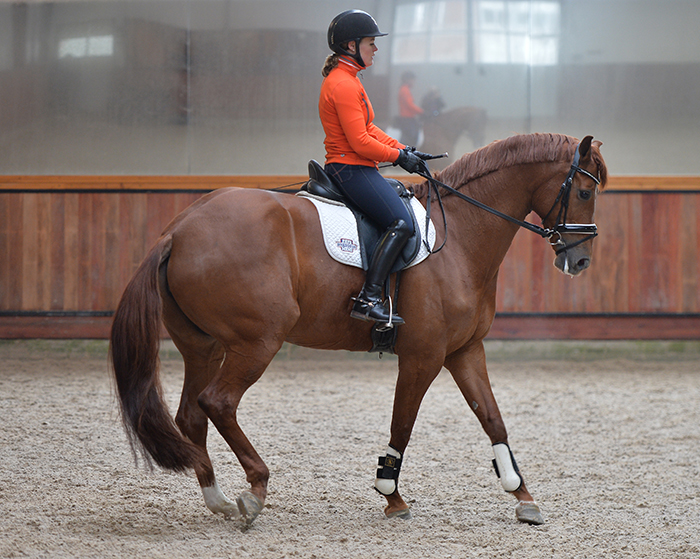
People often talk about inside leg to outside hand, when Jen rides you can actually see it happening. She is doing a series of walk pirouettes, one after another, and of course, when she asks for the canter depart, the horse is in balance and the transition comes so easily.
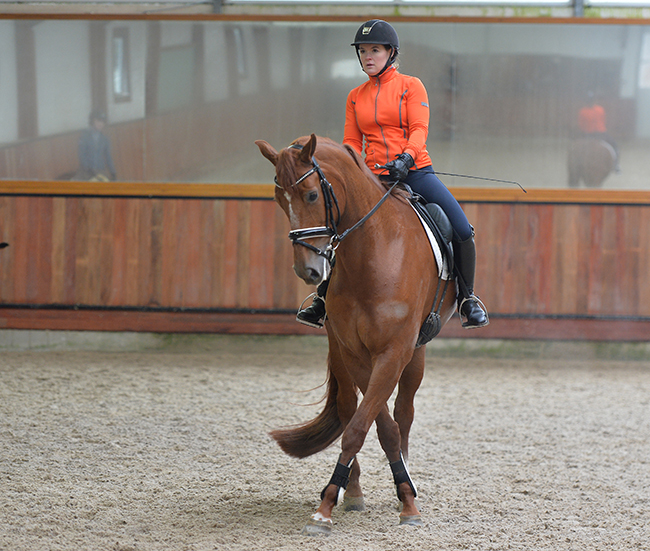
One thing that is amazing about Jennifer’s riding is her hands – you cannot see them move. She and the mare are in perfect balance and co-ordination together.
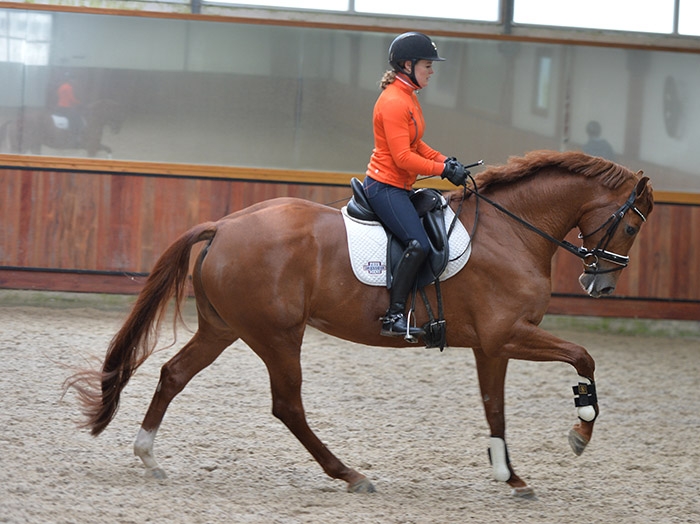
Pic 1
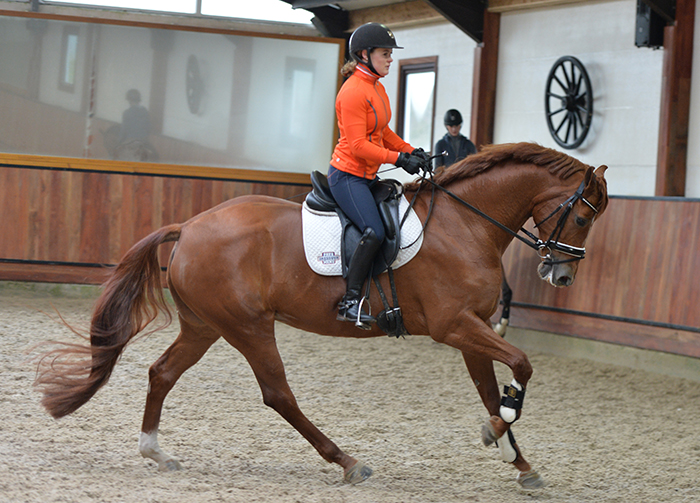
Pic 2
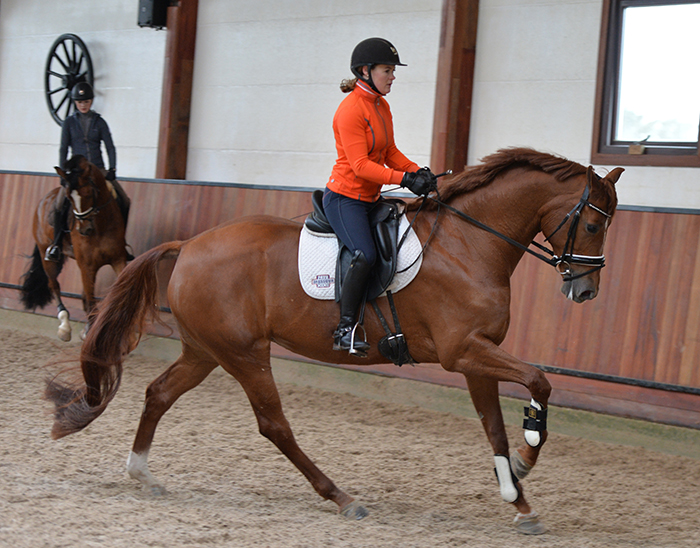
Jen rides the mare under herself, and up in front 1 – 3
Jennifer is the master of riding her horse up in front with her seat, yes, she is nudging with her leg, not nagging, but the occasional nudge, the main aid is the seat. Now she is really working on getting the engagement in the canter, and Jen’s hands are quiet and moving with the horse.
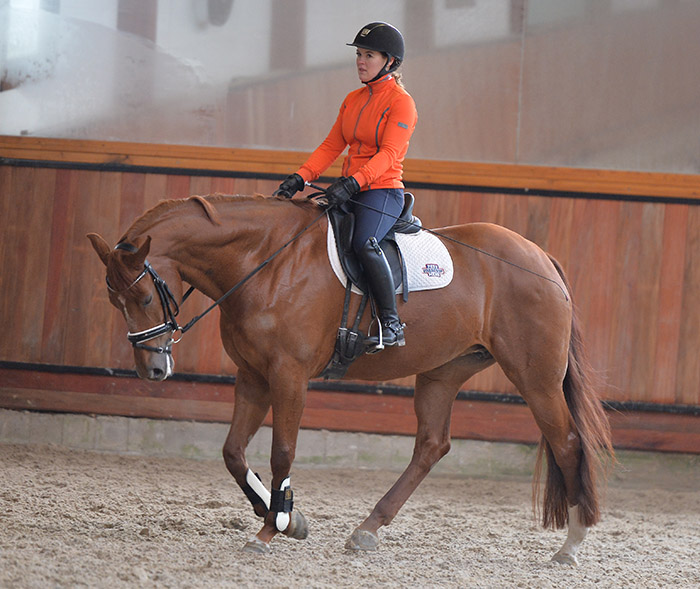
“Good Jennifer,” says Johan, “Now walk. It is important to make lots of breaks in the training. After ten minutes work, make a break, then it is lovely and easy for the horse to make the most difficult exercises, to achieve the highest collection, because with the break he can relax, breathe and recover in his muscles.”
“Rein back again,” comes next, “The first time the mare was down at the wither, the rider should use the legs a bit so the horse carries more weight in the rein back.” Although it should be noted that Johan really hardly says a word to Jen in the working session, Jennifer is well and truly part of the system.
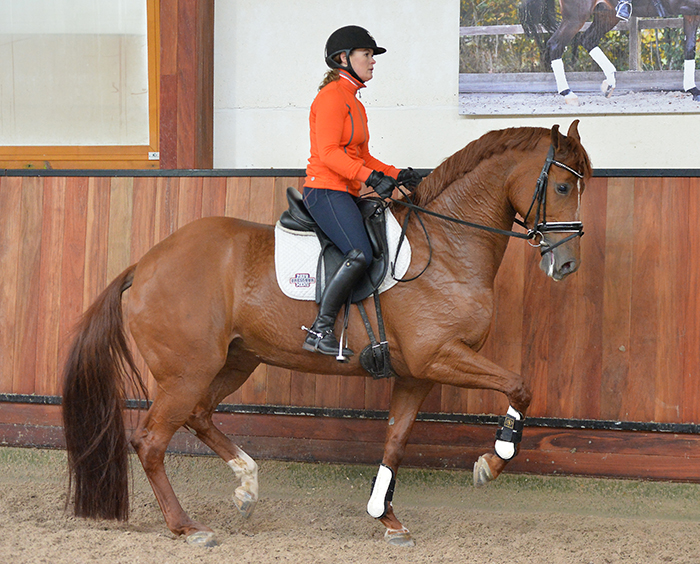
The chestnut is gently into short steps, gets a bit tangled. Stop, settle, try again, and they come, super steps, she looks so like her famous dad.
Damon Hill and Helen Langehagenberg
Johan says it took effort to get these steps: “With this mare, it was not easy for us to collect her and make half steps and piaffe steps because in her back and her loins, she had to develop more muscles, so we could lift up the wither. When Jennifer sits in the saddle the mare does not trust herself, and she knocked herself with her legs, so I said, we won’t try and do it under saddle, we’ll do it with the long reins without the rider. I have gone for kilometre after kilometre with the horse in front of me. Walk, small steps, smaller steps, halt, a little bit back, forward.”
“Now the first steps with the mare are there, and the first steps are good steps, we do two or three steps, and out, so that she stays good in her mind, that she trusts herself, and can control her legs and not get hectic. There are horses that are so sensitive and they have so much power, that they cannot distribute all that power. When you do it without the rider, in long reins, then you can build it up in a soft way and then she trusts herself. You see she does not hit herself…”
“We work only on piaffe. In passage when you go forward and higher in the legs, most horses become hollow in the back. Valegro makes a good passage and he us the back upwards, uphill, but most horses use their back, downhill and that’s not a good passage. When you see the front legs and the hind legs, they become longer and longer and longer and not collecting, collecting, collecting. It is very important when you are riding passage that the horse becomes more collected, and his hind legs are more under the body, that he lifts up his whole body. That’s the reason we are using half steps and more collected steps rather than passage. Passage is no problem for the horse, she has a very nice passage with lifting in the knee and freedom of the shoulder, and from behind is also no problem, but to use the back and the loins, the half steps are a better gymnastic than passage.”
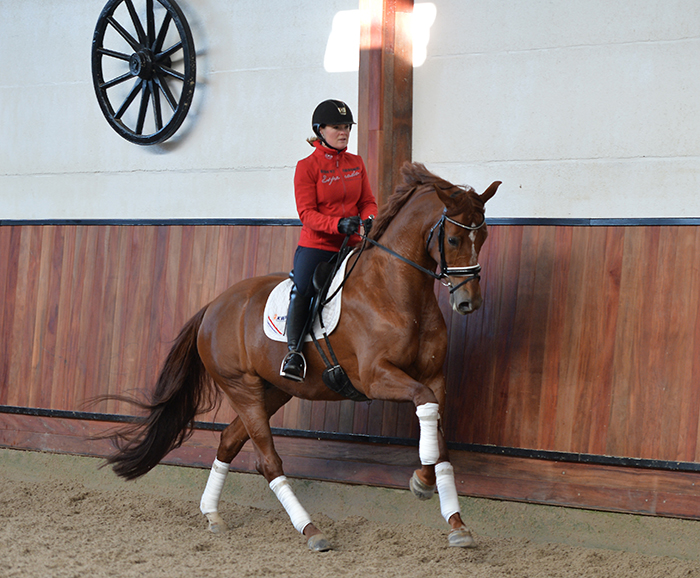
“We are doing work on the medium canter, to make the strides longer and longer and more ground covering. Jennifer had to bring the shoulders a little bit more inside. Her left shoulder wants to go to the outside, so we have to make her really straight.
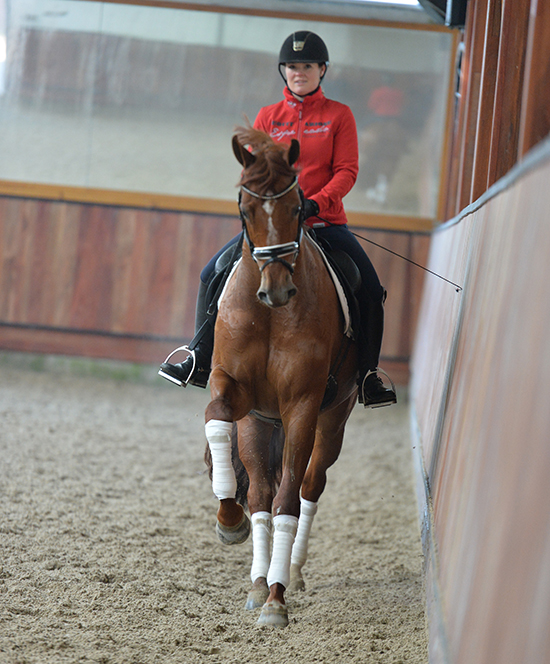
Put the left shoulder inside, and not the head. It is very important when you want to make your horse straight that you have more control of the shoulders, keep the shoulders to the inside with your outside knee and outside leg. Now she brings the mare’s head position a little bit to the outside, then you develop more contact on the inside rein, and that is what you want: the shoulders came inside, the head a bit outside. Always forward and move the shoulders to make the horse straight – and then we see that she becomes longer, and more relaxed in the top line. You can push the outside shoulder a little bit inside, five centimetres, then she is really straight.”
“Now look into the mirror, well done.”
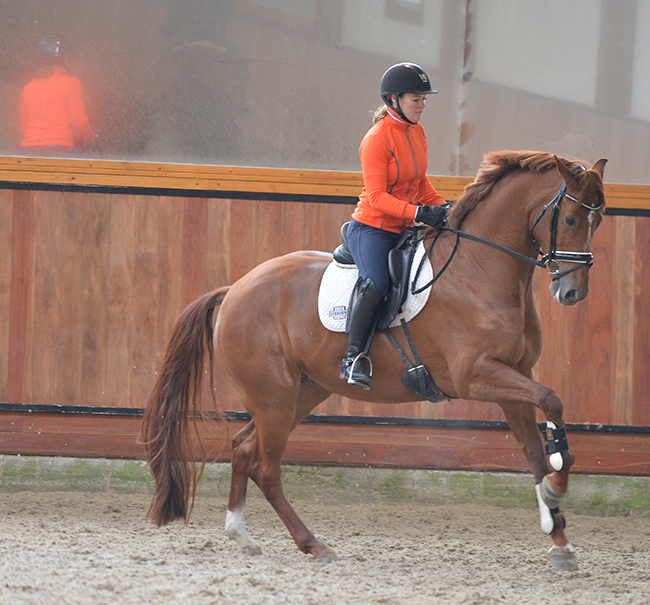
“Many riders use the rein to try and make the horse straight, but all they do is pull the horse’s head to the inside and the shoulder goes out, the rider thinks the horse is straight, but he is not, he is out with his shoulders. The most important exercise where you can see how important the control of the shoulders is, is in the pirouettes.
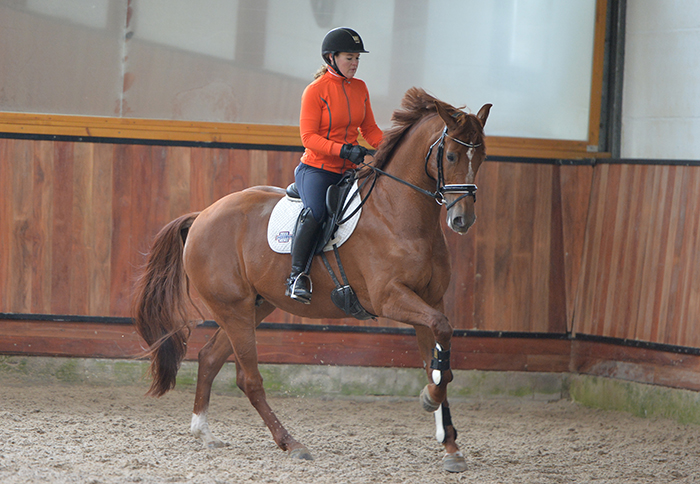
If you can manage the shoulders, you can ride good pirouettes, riders who use their reins, bending the horse to the inside, they have no control of the shoulders, and therefore no control of the hindlegs. Riders who can control the shoulders can also control the hindlegs.”
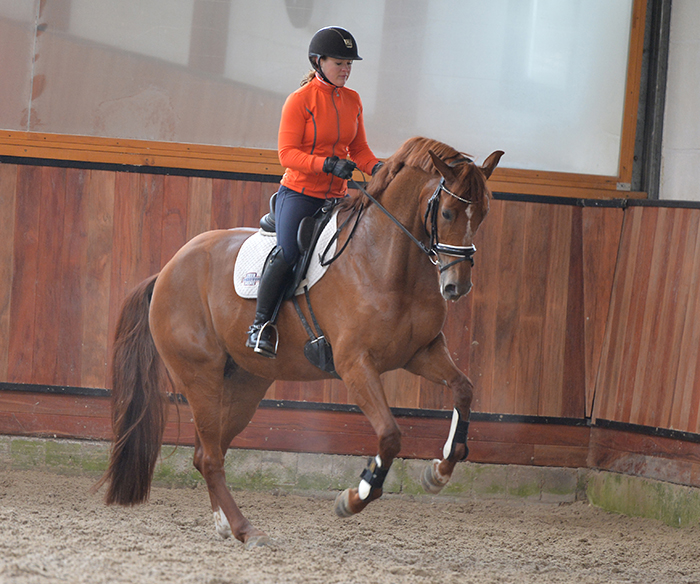
“Now you see in the pirouettes, it is the same exercise, as we did on the track, she has to place the shoulders in front of the inside hind leg. First make some working pirouettes and every time you have to use your inside leg to keep the forward tendency, and you keep the neck a little bit straight, and wait until she has given on your inside rein. Brave!”
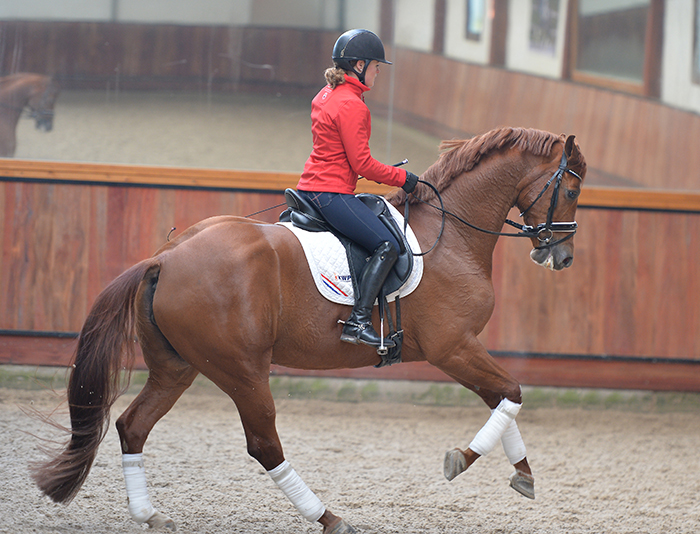
“It is very important not to do anything if the feeling is not good, wait. First make some collected strides, and don’t turn, riders are always thinking, I have to turn, no, the horse has to carry more weight on his hind legs and you have to keep him in rhythm, those are the important things. Ask her to carry more weight, more engagement from behind, and bring the outside shoulder a little bit inside, don’t bend her in the neck, that is the second part. Let her carry more weight, that’s in a better way, in a better rhythm. Now she comes up in the wither, and then you can take the head position a little to the inside. Let her look a little bit inside, and she has to give on the inside rein. Outside rein, steady contact. There, not deeper. Now she can turn a bit a little bit, yeah, she is carrying more weight, make it smaller, smaller – but first you have to make the right position in the horse.”
“Now you can collect, now you can turn, there! Well done. That’s what we want, hind legs are under the body, walk now…”
more follows
“You have to build it up, you have to make it the right position for the horse to carry more weight, and you have to wait, she collects, and collects and collects, then you can turn – the turn is the easiest thing, the horse wants to turn because then she is free, but we don’t want to turn, we want her to carry more weight and use her whole body – then there is a moment when she comes up in the wither and becomes very round and deep in the croup and carries a lot of weight, then you can turn a little.’
You must train all the muscles of the horse, especially the muscles of the top line, then the horse can carry more weight – but when you do a lot of test movements, you don’t train the horse really on his weakest parts, then in every movement you will get into trouble on that part. Every day you meet that weakest part. When the weakest part is stronger, then when I ride the movements, you can do them in a very easy way. The most important thing is that the horse has to do it in an easy way, and when they are strong enough, they can do it in an easy way. I don’t want to over bend the horse, keep the horse straighter, he has to be loose left and right, but then keep him straight and make the shoulders under control. Don’t over bend the horse because if you do, you have no control of the shoulders. Now you can make it smaller, and keep the contact on your inside rein. That’s in the right way, okay, now out.”
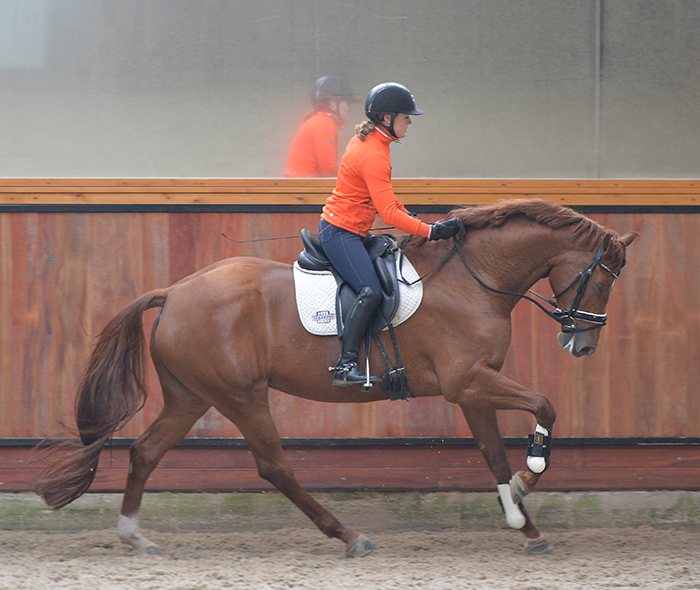
“This is how we develop the right pirouette and it is easy for her, look at the ears and the eyes.”
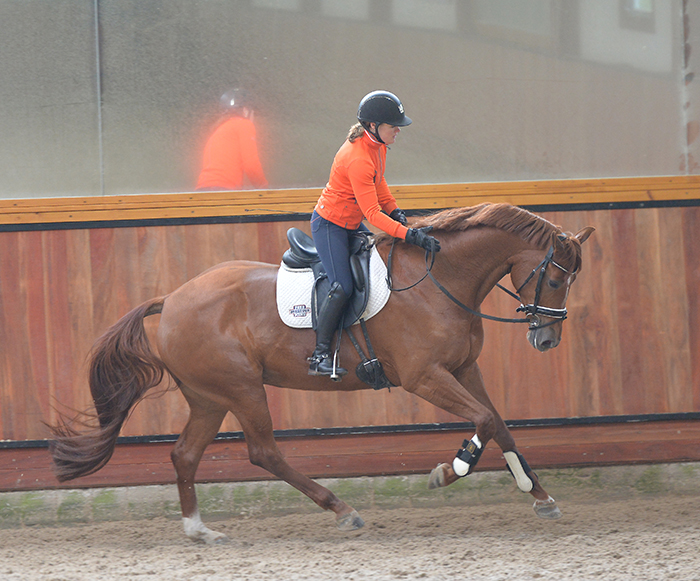
“Now go in a big circle, a little bit longer, not much deeper, but a little bit longer on a big circle so she becomes totally loose in her top line. There, the horse asks for the reins can I have more lengthening? Yes.”
“Now pick her up a little bit and walk. When you collect a horse so much you have to make sure there are short intensive parts in your training, five or ten minutes, then walk for a while – not riding, riding, riding.”
“That’s the reason that we have success, we also have difficult horses, the Sandro Hit is a difficult horse with his high croup, but when you are training, training, training, and you understand the training scale, then each day it is better and better, but you have to work, you have to train, then when you are happy with your training, your horse is also content. But if you are training today forward, and tomorrow, backwards, and the day after, sideways, then there is no system and the horse becomes crazy in his head.”
“That’s fine, slow in trot, long neck, brave. “
This mare is going to go Grand Prix?
“No problem I think but we take time. Last year, she did not go to a competition, we had to train the loins and the back muscles, and now we say, okay she makes passage and piaffe steps, and she can go in the Prix St Georges – but why? You have to take your time and look to your horse – is he strong enough in his body? Is he also good in his mind? When you are in good shape, then you are also good in your mind. If you are not good in your body, you are not so content in your mind, and the horse is the same. That is the most beautiful work, build the horse up, build the horse up and see that it develops in the right way, that gives me a kick!”
Time to bring the session to an end, Jennifer has moved her hand, the inside hand, opening out, encouraging the mare to lower her head and neck; the hand comes back in place. Even with her neck down, the hind legs are still engaged still carrying the weight, and the best thing is that the horse, despite having worked quite hard, is totally relaxed, totally calm…
This story originally appeared in the May 2014 edition of The Horse Magazine.
The Hanoverian stallions, De Niro and Delatio, leading representatives of the ‘D’ line, are available in Australia next season go to www.ihb.com.au
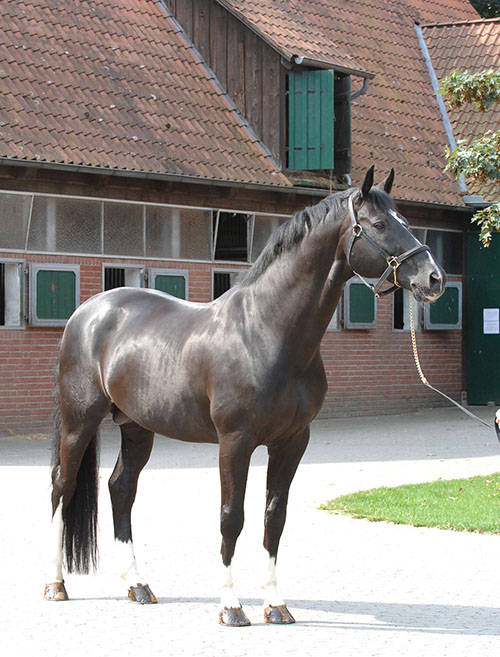
De Niro
Delatio

